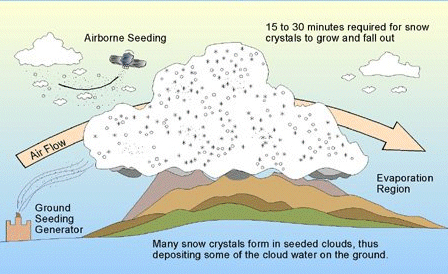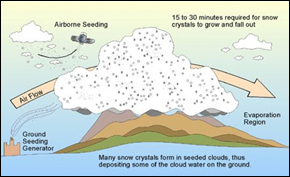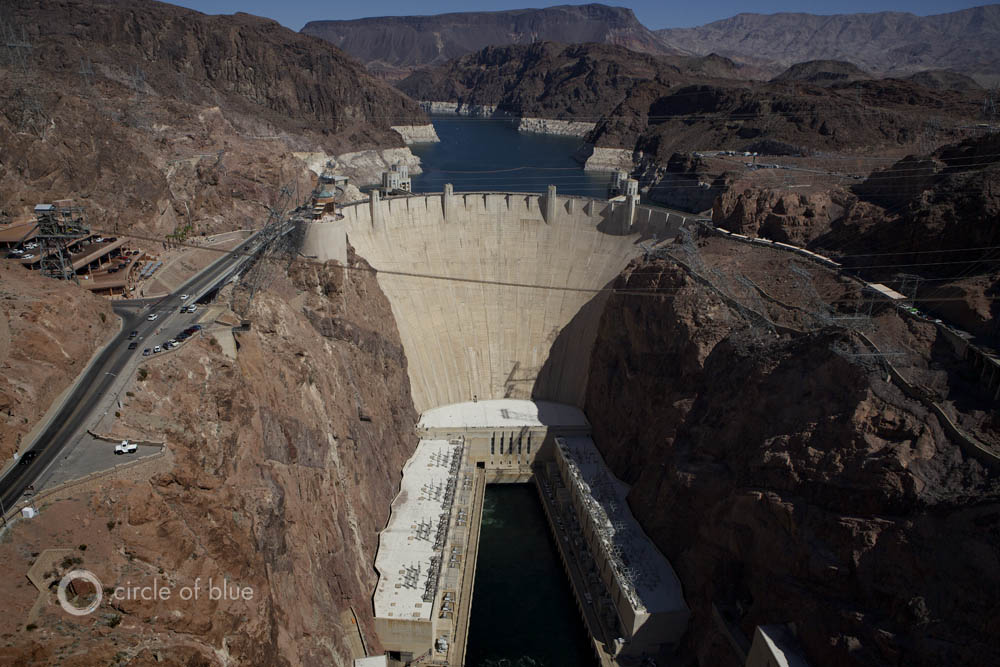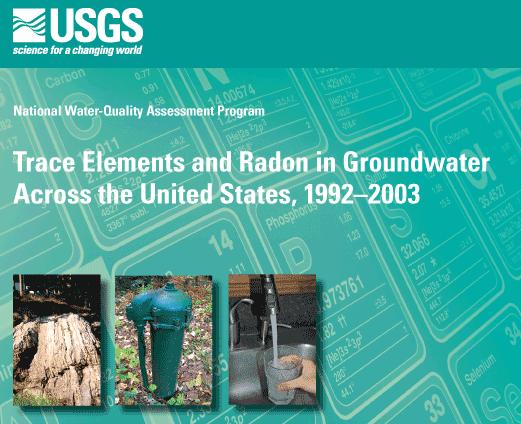Beijing’s Snow Day Might Hold Solution to Climate Problems
Cloud seeding, a weather modification technique that induces precipitation, might be the key to keeping the Earth’s temperature in balance, scientists say.
Beijing residents awoke last week to the earliest snow in the city in 21 years thanks to cloud seeding by the city’s Weather Modification Office, the Christian Science Monitor reports.
Drought has gripped northern China particularly hard, causing government officials to implement technological solutions.
“We have to seize every opportunity to increase precipitation,” the head of the Beijing Weather Modification Office, Zhang Qiang, told the Global Times last week. “Beijing had almost no rainfall in October.”
Officials in Beijing used cloud seeding before the 2008 Summer Olympics to ensure a dry opening ceremony.
Cloud seeding induces rain by scattering aerosol particles in the clouds. Silver iodide, the most common particulate used, is shot by a ground rocket or by a flare from a plane into a cloud to provide a nucleus for water vapor to cling to. Rain happens when these particles coalesce into a droplet heavy enough to fall.
Clouds need to be present before they can be seeded, said Roelof Bruintjes, a weather modification expert at the National Center for Atmospheric Research.
“The probability of creating rain depends on the technique and the water vapor content of the clouds. Efficient clouds release 80 percent of their mass as rain. Inefficient clouds release only 20 percent. It is easier to enhance precipitation from inefficient clouds,” Bruintjes said.
Though cloud seeding is widely used, it has caused disputes in some areas of China. Authorities in the Henan province used cloud seeding to alleviate drought in 2004. When more rain fell over the western region than the eastern, meteorological officials from eastern cities accused their counterparts of intercepting ‘their’ rain, the BBC reported.
Some scientists say the technique can be used for more than rain production.
John Latham, Senior Research Associate at National Center for Atmospheric Research, and Stephen Salter, Professor of Engineering Design at the University of Edinburgh, advocate seeding to create great cloud mirrors above the earth’s oceans, which could regulate global temperatures until non-carbon-based energy sources are widely available.
Their plan is to use wind-powered ocean vessels to spray seawater into low-level clouds to increase their albedo, or reflectivity. Clouds with a higher concentration of water particles could send more incoming sunlight back to space before it touches and heats the earth.
“Cloud seeding is not a solution to fossil fuel use,” Latham said. “A global cooling scheme does not address ocean acidification, for example. But it can provide breathing space to hold the global ice cover and temperature in balance in the short term.”
The scientists are also researching how their scheme might impact land rainfall and wind patterns, which are strongly affected by ocean conditions.
Source: Christian Science Monitor
Read about a U.S.-based cloud seeding program in Utah here.
Brett writes about agriculture, energy, infrastructure, and the politics and economics of water in the United States. He also writes the Federal Water Tap, Circle of Blue’s weekly digest of U.S. government water news. He is the winner of two Society of Environmental Journalists reporting awards, one of the top honors in American environmental journalism: first place for explanatory reporting for a series on septic system pollution in the United States(2016) and third place for beat reporting in a small market (2014). He received the Sierra Club’s Distinguished Service Award in 2018. Brett lives in Seattle, where he hikes the mountains and bakes pies. Contact Brett Walton











Leave a Reply
Want to join the discussion?Feel free to contribute!